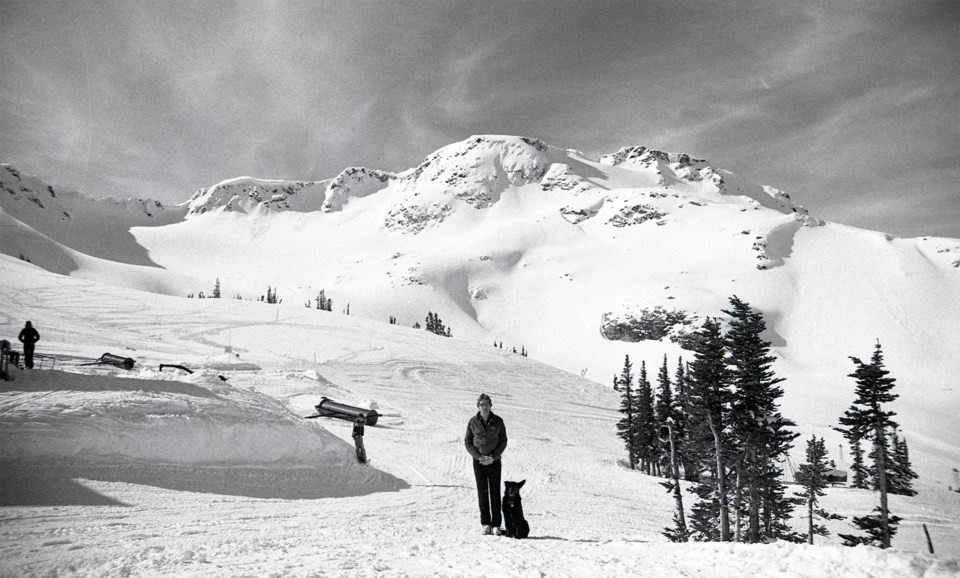While on the mountain this season, you might come across a dog or two out with ski patrol, possibly even riding a chair in front of you. These dogs are not, as some might think, part of a “bring your pet to work day,” but are avalanche rescue dogs who are at work themselves.
Such dogs have been working on Whistler Mountain for more than 40 years. After being buried in an avalanche in March 1978, patroller Bruce Watt began looking into avalanche rescue dogs, encouraged by Chris Stethem, who was then Whistler Mountain’s safety supervisor. (You can hear more about the avalanche and the rescue from Bruce and fellow patroller John Hetherington on the Whistler Museum YouTube channel.) Watt wrote a report, took it to Franz Wilhelmsen, and received permission and support from the lift company to go ahead with finding a dog and training.
Bruce wanted to get a black lab, but, having limited experience with working dogs, he listened to the advice of the RCMP, who suggested he get a German shepherd. He found a black German shepherd at a kennel in Surrey and, according to Watt, “he was a good-looking dog, so I chose him.” He named the dog Radar and the two started training together. At the time, Watt received generous support from the lift company. In an interview in 2022, he remembered he was paid over the summer for training and food, vet bills, and pretty much anything needed for Radar could be expensed.
At the time, there was no civilian training for avalanche rescue dogs, so a lot of the training and all of the validation was done through the RCMP. Watt was not the only patroller from a ski area training a dog. Rod Pendelbury, a patroller in Fernie, had also begun training with a dog, and the two communicated about the challenges they encountered and found others who were also interested in the patrollers having avalanche dogs.
According to Watt, training with Radar included training with helicopters, snowmobiles, snowcats, and toboggans, as well as a lot of obedience and rescue training. While Radar was one of the first “civilian dogs” to be validated as an avalanche rescue dog in Canada, the process was complicated, and Watt and Pendelbury were encouraged to spearhead a separate organization to train avalanche rescue dogs outside of the RCMP. This eventually led to the formation of the Canadian Avalanche Rescue Dog Association in 1982.
Prior to Radar, dogs were not a common sight on Whistler Mountain, though there had been a couple who were associated with the ski hill in the 1960s and earlier in the 1970s. Watt remembered the reaction from a lot of people was, “Hey, what are you doing with your dog up here? How come I can’t bring my dog up here?” He also suspected that, even though the RCMP had told him he shouldn’t let people pet or play with his dog, other patrollers may have been petting Radar behind his back.
Years later, after leaving full-time patrolling and going into real estate, Bruce began working on the Blackcomb Mountain volunteer patrol where he got to be “the dog guy” with his dog Max. By that time, Whistler Mountain had an established avalanche rescue dog program while Blackcomb Mountain was just starting its own. Although Radar has retired, his legacy as the first avalanche rescue dog in the area is well remembered—there is even a picture book about him, Radar the Rescue Dog, written by Janet Love Morrison that can be found at the Whistler Museum, Armchair Books, and the Audain Art Museum.




